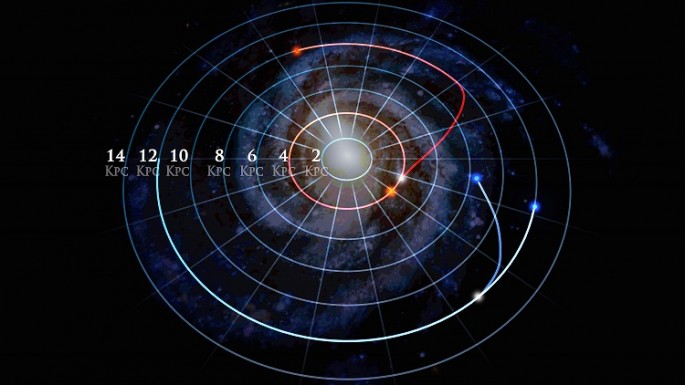A new study reveals how stars inside our galaxy have apparently travelled distances in relation to cosmic time, however slow moving they may be. Stars may seem to be at a fixed spot in the skies, emitting light from deep space but they are also similar to planets where their orbits also change.
Scientists from the New Mexico State University along with researchers from the Sloan Digital Sky Survey created the first ever map of the Milky Way revealing that 30 percent of the galaxy's stars have orbits that were dramatically changed.
According to the study's lead author Michael Hayden from the New Mexico State University, he compared these stars how people can travel around the world away from their birthplaces where this finding rings true for stars found inside the Milky Way galaxy.
During the course of the study, the researchers utilized the SDSS Apache Point Observatory Galactic Evolution Explorer spectrograph in order to map out the galaxy. The scientists were able to observe roughly 100,000 stars that lasted for four years.
Data taken from each star's atmosphere reveals elements that the team were able to analyze and interpret for the new map of the Milky Way. Hayden also adds that the stellar history and origins can be obtained by studying the chemical compositions of the stars.
This data and additional chemical information include the amount of light emissions measured at various wavelengths where specific elements and compounds are shown via linear visualizations for astronomers to read and predict the composition of the stars.
According to co-author of the study Jon Holtzman, this stellar spectra is also evidence about the constant changes occurring in our galaxy. Stars in essence possess heavier elements within their cores and when a star dies, these elements are now transformed into gas that can produce a new generation of stars.
This amount that provide traces of the heavy elements found in a star can greatly help astronomers where the exact origins of where a star is born. This would mean that newer generations of stars possess heavier elements than the prior generation.
However, star formation is not always the same for each star, which can be different depending on the region of the galaxy where some regions are more dynamic or turbulent from the others.
With this new found pattern of the Milky Way galaxy, the team reveals how stars migrate in a radial pattern where they can move closer into or away from the center of the galaxy due to irregular regions such as the spiral arms of the galaxy. This new study is published in The Astrophysical Journal.



























